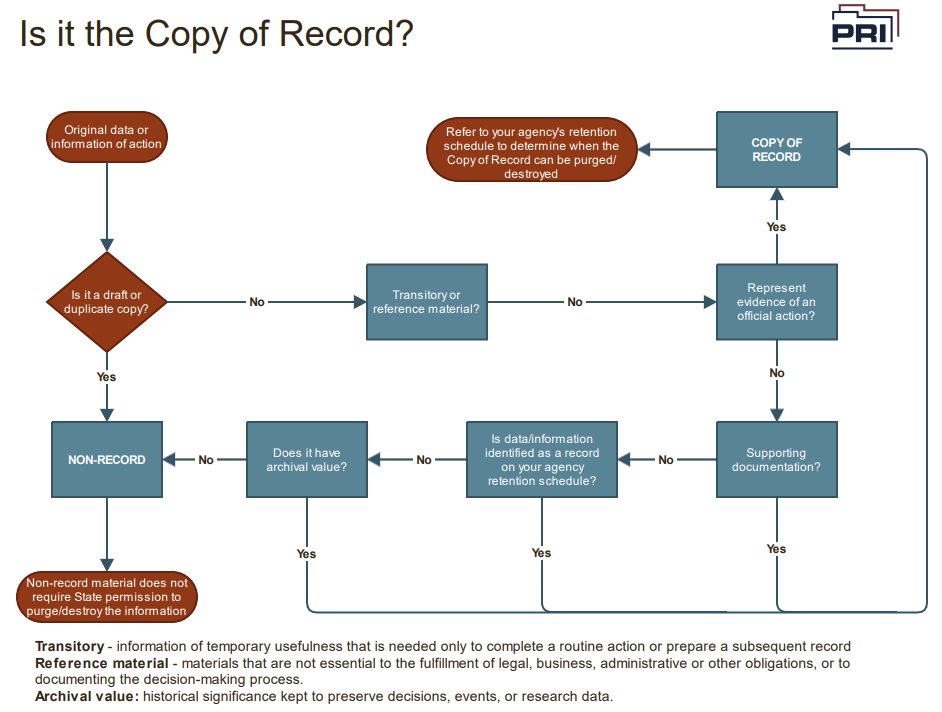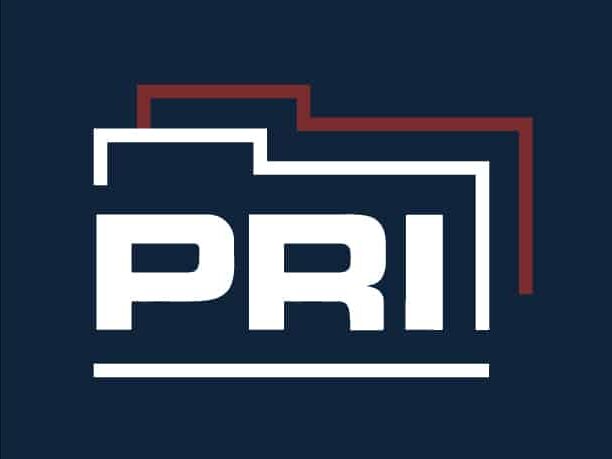Article PDF
May 2024
“Copy of Record”. What does it mean?
Can you believe in the 21st century, many government agencies are still creating paper records as the de-facto medium of choice? In similar vein, many choose to scan records which could have been created electronically, and keep the source document indefinitely.
When a paper record is scanned, does it become the original, or is the electronic version a copy? It all comes down to what your policy says, and understanding records management terminology.
Copy of Record
One might think that the term “Copy of Record” means a duplicate record. It is a confusing term indeed. However, this terminology refers to the version of a record which is deemed to be the official copy. Said otherwise, it means this is the official copy of this particular record. The copy of record is what many refer to as the “original”. This would be correct as long as agency policy says so.
Scanned records which are deemed to be the original should be designated as such in records management policies, and/or procedural manuals. Such explanation is what helps employees to understand what records can be purged according to retention schedules.
Duplicate or Draft
A duplicate record is a reproduction of the Copy of Record, often produced by photocopying or scanning. A duplicate record has meaningful purposes. Frequently used to share information through the distribution of the medium and often used as a backup document to the Copy of Record. If a paper record is scanned only for duplication purposes, and not to replace the source record as the original, this too should be described in policy.
A draft record is an unfinished, still in progress version of the data or information of action. When no additional edits are required, the original data or information is considered complete, then becoming the Copy of Record.
How to determine the difference.
There are some characteristics that often define a Copy of Record and they are:
- Original origin: The initial, genuine, unaltered information about the event or transaction.
- Primary source: The first hand account of information, an event, or transaction.
- Creation at the time of the event: Created simultaneously with the event or transaction, providing a direct and immediate account of the occurrence.
- Formality: Often produced in a formal manner, adhering to established procedures, standards, or protocols.
- Integrity: The information has not been altered, tampered with, or manipulated since its creation.
To consider what is the “Copy of Record” ask the following questions to derive the conclusion.
-
Did something happen when you or your office completed the action the data represents?
-
Did it require signatory action?
-
Was a decision determined?
-
Was this the final form of communication?
If you answer yes to any of these questions, then your document is more likely than not, the “Copy of Record.”
The attached diagram may also help in determining if your agency’s data or information is the Copy of Record (see flowchart).

Agency Policy
Now that your agency has received or created numerous Copies of Record, in various formats, how do members of your agency know what to do with all this information?
Refer them to your agency’s information management policy for guidance.
A records policy defines what information your agency must keep as a record, the procedures for managing those records, their retention periods, and procedures for ensuring their secure destruction.
This written documentation is crucial to the overall effectiveness of your agency’s information management procedures. Documented policy ensures consistent practices across the organization. It provides clear expectations, reducing employee confusion, eliminates any ambiguity about decisions made, and holds members of the agency accountable for their actions. It increases compliance levels, mitigating the risk of any legal repercussions.
How PRI Can Help
PRI specializes in public safety information management consulting, training, and technology. We help mitigate risk, re-engineer processes to enhance efficiency, and achieve compliance.
Since our establishment in 2008, we have been steadfastly dedicated to assisting law enforcement with procuring, managing, and implementing information management systems, procedures, and policy, all the while ensuring compliance with the complex landscape of public records, NIBRS, and technology standards.
Our web-based public records request management system, GovQuest, allows you to receive, track, assign, and process requests online. Our consulting programs help you implement technology successfully, while controlling vendor’s unnecessary costs.
Contact us for assistance at info@policerecordsmanagement.com or 305-460-0096.

 0 ITEMS
0 ITEMS